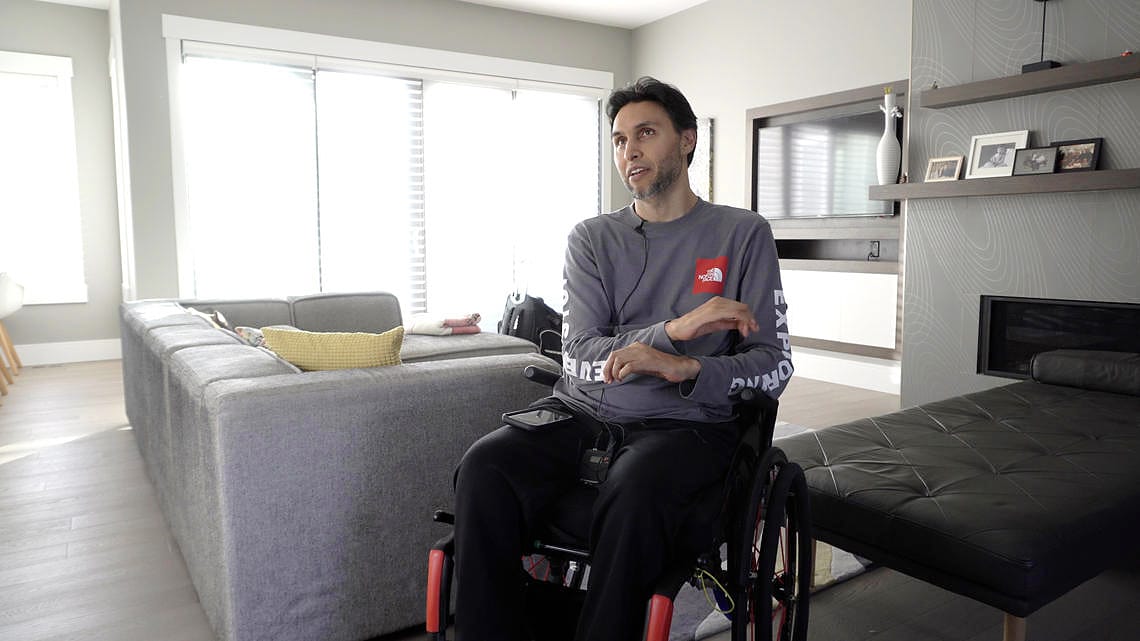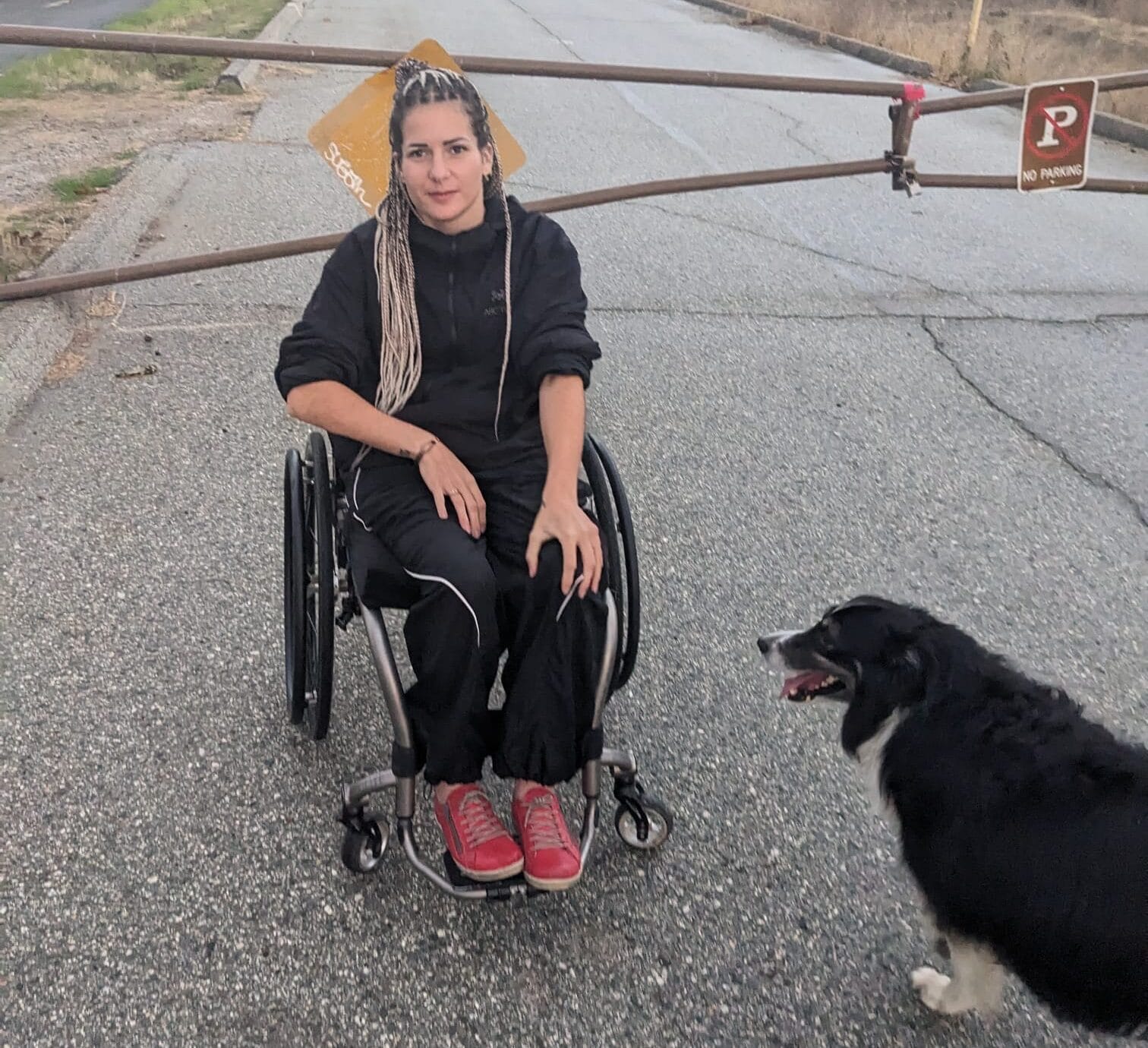An international team of researchers, co-led by the University of Calgary’s Dr. Aaron Phillips, has made an important breakthrough in neurostimulation and the search for a treatment for dangerously low blood pressure in people with SCI.

We’ve known for decades that SCI, depending on its level in the spinal cord, can greatly compromise your baroreflex (a biological mechanism that regulates your blood pressure). There are two potentially serious implications—one is dangerously high blood pressure (orthostatic hypertension) resulting from autonomic dysreflexia or AD, and the other is dangerously low blood pressure (orthostatic hypotension).
They’re triggered in two entirely different ways. The culprit behind AD is usually an external stimulus below the level of injury—for example, a bladder infection or a pressure ulcer can trigger an AD bout. On the other hand, orthostatic hypotension, or OH, is triggered by something as simple as moving from a lying position to a sitting position. Dizziness, confusion and even passing out are the clues that this is happening.
OH has more sinister implications—over time, it can lead to serious and sometimes fatal cardiovascular problems such as stroke and heart attacks, which are the leading causes of death for people with SCI.
OH is much more common than its high pressure counterpart—it’s estimated that up to 75% of people with SCI experience symptoms of OH, and that estimate climbs to as high as 90% for people with quadriplegia. Given that OH is so common and so potentially dangerous for people with SCI, strategies to treat it have been explored for decades—but with limited success. Blood pressure-regulating medication, compression stockings and abdominal constriction belts have never been proven to be effective. In particular, medications have some undesirable side effects.
New Research on Orthostatic Hypotension
Now, new research is demonstrating that electrical stimulation at just the right point in the spinal cord may represent an effective and drug-free way of preventing OH for people with SCI. In January, an international research team co-led by University of Calgary neuroscientist Dr. Aaron Phillips published a paper in the journal Nature that explains how they successfully developed a “neuroprosthetic baroreflex” using an epidural (implantable) stimulator.
Collaborating with other researchers, MD’s and neuroscientists they focused on treating OH using an epidural stimulation device—one that’s implanted next to the spine. The team chose to work with already available neuroprosthetic technology developed by Swiss company ONWARD Medical to restore walking function in people with SCI. They adapted the device for specific use with OH, determining the exact location on the spinal cord to apply stimulation to, and developing the closed-loop feedback system that “instructs” the stimulus to fire and increase blood pressure when it senses OH is taking place.
“We have effectively engineered a new baroreflex using a prosthetic implant,” Phillips says. “The system constantly reads the blood pressure in the body and creates a set point where blood pressure should be and sends messages to constrict blood vessels to raise blood pressure.”

The Device in the Real World
After successful testing of the concept in animal models, they applied the approach in a human—Dr. Richi Gill, an Alberta doctor who became quadriplegic after a boogie boarding accident during a family vacation in Hawaii three years ago. OH had been a big problem for Gill since his injury. His OH bouts were often severe, forcing him to basically put his head in his lap or lie down until his dizziness and blurred vision retreated. Blood pressure medication helped a little, but the improvements were offset by its side effects.
Since having the device implanted last year, he’s been using it for about an hour each morning, and it continues to quickly elevate his blood pressure to safe levels. He no longer needs blood pressure medication, has been able to return to work as a physician, and says his quality of life has improved significantly.

Future Plans for Hypotension
Phillips says the plan is to thoroughly test the procedure so it can be approved without delay by regulatory agencies, including Health Canada. The ultimate goal is that the device will be offered as a matter of course to anyone with SCI who suffers from OH. “We’re aiming to have this therapy in the community in less than five years,” says Phillips. “This timeline is realistic because we have the support of DARPA and ONWARD Medical”
The trial will seek to recruit only people with quadriplegia, as they are the most likely to experience debilitating OH. At the trial sites (Calgary and Lausanne, Switzerland), qualifying participants will have the device implanted during what is a relatively straightforward procedure. “This is a 45-minute day surgery, where folks usually go home afterward,” explains Phillips. “In fact, this surgery can be done under local anesthetic.”
We need to keep in mind that this surgical approach has been around for decades for people with chronic pain. There are many analyses of the safety profiles of this surgery. One of the largest was a recent review of 20 years of literature reporting on this surgery—it concluded that this intervention was safe and effective.”
There will also be an opportunity for readers of The Spin to get involved as participants. “People from BC with SCI will be eligible to participate in the trial,” says Phillips. “We encourage folks from BC to reach out. For this phase, there will not be surgeries taking place in BC, but in subsequent phases of the roll-out, this will be likely.”
A Word of Caution
While early successes provide a great deal of hope that this approach might produce a reliable, drug-free way of relieving OH, it’s important to remember that there are no guarantees with any research.
Dr. Patrice Guyenet, professor of pharmacology at the University of Virginia, Charlottesville, wrote an accompanying editorial in Nature that was complimentary of the results but also contained a few cautionary notes. “This bench-to-bedside study … raises several questions,” wrote Guyenet. “For example, the sensory afferent neurons stimulated by the prosthetic device are unidentified and the long-term effects of their stimulation are unknown,” he says. “In addition, it needs to be established whether the device will have adverse effects on gastrointestinal and kidney function … Finally, an invasive procedure is required for the placement of an epidural electrode in the spine, and its long-term efficacy is unknown.”
If you’re interested in learning more about this research, visit the Phillips Lab website aaronphillipslab.com.
 This article originally appeared in the Spring 2021 issue of The Spin. Read more stories from this issue, including:
This article originally appeared in the Spring 2021 issue of The Spin. Read more stories from this issue, including:
- Reality TV and SCI
- Restoring Sexual Sensation
- New, Affordable Technology
And more!



